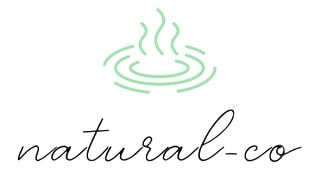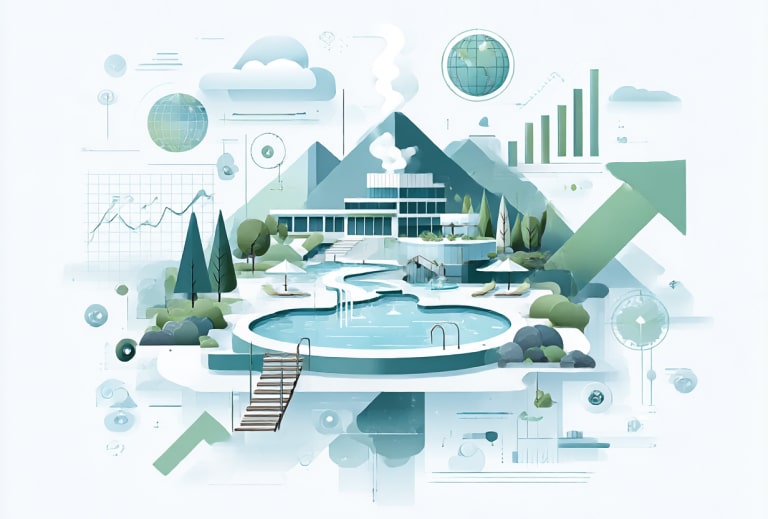Hot Spring Market Trends — Where the Global Wellness Wave Is Headed
- Hot Spring Market Trends — Where the Global Wellness Wave Is Headed
- 1. The Global Hot Spring Market Outlook (2025–2030)
- 2. Emerging Themes Shaping the Hot Spring Industry
- 3. Investment Signals and Regional Patterns
- 4. From Tradition to Transformation
- 5. How to Analyze Market Trends with Natural-Co
- Conclusion: A Market in Motion
The global wellness industry is bubbling with new energy — and hot springs are at the center of it.
Once seen as traditional spa destinations, hot spring resorts are now evolving into sustainable, multi-purpose wellness ecosystems that combine travel, healthcare, and environmental consciousness.
As we move toward 2025 and beyond, understanding the shifts in consumer demand, regional growth, and business innovation is essential for investors, developers, and operators in the wellness sector.
1. The Global Hot Spring Market Outlook (2025–2030)
According to the Global Wellness Institute, the wellness tourism market is projected to surpass $1.3 trillion by 2025, with hot springs and hydro-therapy facilities accounting for a significant portion of that growth.
The Asia-Pacific region — led by Japan, China, and South Korea — continues to dominate, but Europe and North America are seeing renewed interest driven by aging populations and eco-travel trends.
| Region | 2025 Market Share (%) | Growth Drivers |
|---|---|---|
| Asia-Pacific | 46 | Domestic tourism recovery, aging population, cultural traditions |
| Europe | 28 | Wellness retreats, sustainable tourism, thermal heritage |
| North America | 18 | Health-oriented travel, nature-based resorts |
| Middle East & Others | 8 | Luxury spa development, desert wellness concepts |
2. Emerging Themes Shaping the Hot Spring Industry
A. Wellness Meets Sustainability
Modern travelers increasingly choose eco-certified resorts. Geothermal energy reuse, local sourcing, and low-carbon designs are becoming brand differentiators.
B. Medical and Therapeutic Integration
More operators are merging hydrotherapy with medical care — from joint pain treatments to preventive wellness programs — transforming hot springs into long-stay health destinations.
C. Experience Personalization
AI and data analytics now help resorts tailor temperature preferences, treatment plans, and spa itineraries to each visitor’s lifestyle or health data profile.
D. “Slow Travel” and Senior Wellness
Longer-stay visitors (especially seniors and digital nomads) are driving growth in hybrid “stay-and-heal” packages — a bridge between tourism and healthcare hospitality.
3. Investment Signals and Regional Patterns
| Investment Focus | Examples | Notable Trend |
|---|---|---|
| Health Tourism Expansion | Japan, Taiwan, Iceland | Combining traditional therapy with medical tourism |
| Eco-Luxury Hot Springs | New Zealand, Austria, Canada | High-end design meets sustainable experience |
| Real Estate-Linked Wellness | Thailand, Portugal, China | Hot spring villas and senior living developments |
| Digital Operations | South Korea, USA | AI-driven booking and guest experience platforms |
Developers are increasingly partnering with wellness-tech providers to optimize resource use and customer insights — and that’s where data-driven tools like Natural-Co’s Market Trends Analyzer make a real difference.
4. From Tradition to Transformation
Hot springs have been part of human culture for centuries — from the Roman baths to Japan’s onsen culture — but the business model is evolving.
The next decade will see a clear divide between heritage-based spas and data-driven wellness destinations. The winners will be those who connect authenticity with analytics.
In short: sustainability, senior wellness, and smart data are the three forces shaping tomorrow’s hot spring market.
5. How to Analyze Market Trends with Natural-Co
Natural-Co’s Hot Spring Market Trends Tool lets you instantly identify:
-
Which regions are expanding fastest
-
What investor signals are emerging
-
How public health or tourism policies affect demand
-
Where eco-certifications drive customer preference
It’s not about guessing where the market is going — it’s about seeing the data clearly, before your competitors do.
Conclusion: A Market in Motion
The wellness wave is just getting started. As aging societies, eco-travelers, and health-focused consumers converge, the hot spring industry is shifting from tradition to innovation.
Whether you’re planning a new wellness resort or investing in an existing destination, tracking the right data helps you anticipate trends — not chase them.

